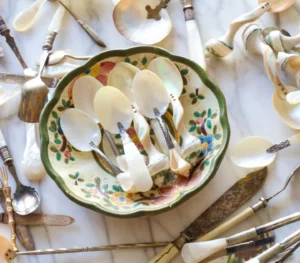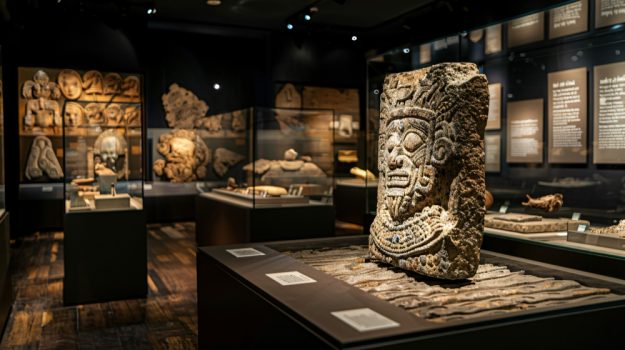 Pin
Pin Image from Freepik
History isn’t just in textbooks — it’s lying quietly under the earth, locked inside objects that survived against all odds. Some of the oldest things humans made are still around today, like silent witnesses of a life that was raw, wild, and unpredictable. In this article, we’re diving into the Top 10 oldest artifact ever found — the real survivors that tell us what ancient people wore, built, carried, and fought for. They’re not just museum pieces; they are frozen memories, still breathing after thousands of years.
The hunt for the world’s oldest artifacts feels almost like time traveling. Every object on this list carries real weight. They’re not replicas. They’re the real deal — weathered by time, scarred by nature, yet somehow still standing, still whispering. So let’s not just talk facts; let’s actually feel what these artifacts meant when they were first touched by hands like ours, hands that lived and loved fiercely long before us.
Table of Contents
1. The Venus of Hohle Fels – 35,000 to 40,000 Years Old
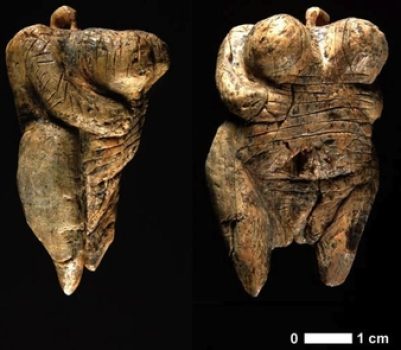 Pin
Pin Image from Wikimedia Commons
The Venus of Hohle Fels is raw, ancient beauty captured in a small figure. Found in a German cave, this mammoth ivory sculpture was carved about 35,000 to 40,000 years ago, making it one of the oldest pieces of figurative art ever discovered. It’s small enough to fit in your palm, but when you hold it (or even just see a picture), you feel how big it is inside. It’s a symbol of life, fertility, and probably the deep mysteries of early human spirituality.
Scientists found it in 2008, and it flipped everything we thought about ancient creativity. Before this, people believed detailed art came much later. But the Venus of Hohle Fels shows that even 40,000 years ago, humans had stories, symbols, and dreams. You can literally see the wear of time on it — the tiny cracks, the texture worn by centuries of dust and ice. It’s like humanity’s oldest love letter to the unknown.
2. The Löwenmensch Figurine – Around 40,000 Years Old
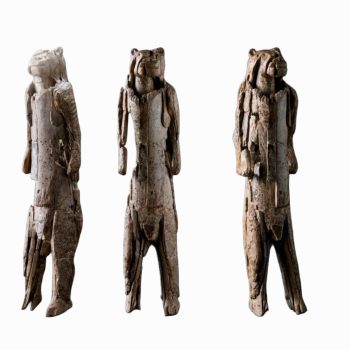 Pin
Pin Image by The British Museum
The Löwenmensch, also known as the Lion-Man, is a mind-blowing piece of ancient imagination. Carved from mammoth ivory about 40,000 years ago, it was found deep inside the Stadel cave in Germany. This isn’t just a statue — it’s half human, half lion, and it shows that even in the harshest, coldest times, people were dreaming bigger than survival. They were thinking about myths, spirit animals, and maybe even gods.
Holding the Löwenmensch today feels almost like breaking some secret rule of time. You’re staring at something made by a person who lived through brutal winters, who probably struggled for every meal, yet still carved something magical. It’s about 12 inches tall, and you can see the careful cuts where someone patiently shaped it with stone tools. Every line screams a kind of raw devotion to storytelling. This artifact isn’t just old — it’s proof that the human mind has always been a little wild, a little magical, and very much alive.
3. The Oldest Known Spear Tips – 400,000 Years Old
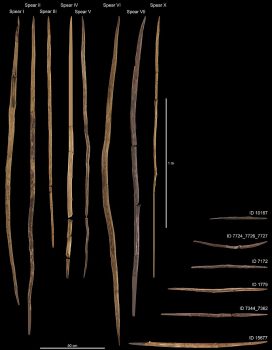 Pin
Pin Image by Matthias Vogel, CC BY 4.0, via Wikimedia Commons
Holding a spear tip that’s 400,000 years old feels like touching the true beginning of human ambition. These ancient spear tips, made from stone, were found in a place called Schöningen in Germany. Scientists believe they were crafted by early humans, possibly Homo heidelbergensis — a distant ancestor who didn’t just survive but hunted large animals with strategy and guts. These are the earliest weapons that show us we weren’t just scavengers. We were hunters.
The spear tips are surprisingly well-made, polished to deadly sharpness, balanced to fly right through the air. You can almost picture a small hunting party crouched in the grass, adrenaline rushing, using their wits and courage to take down giant beasts. That’s real human history right there — fear, courage, survival, and teamwork. These artifacts aren’t just old weapons. They are the first whispers of human technology, proof that the drive to create tools — to master our world — is built into our DNA.
4. The Blombos Cave Engraving – 75,000 Years Old
 Pin
Pin Photo: © Chris Henshilwood
The Blombos Cave engraving isn’t big or flashy, but it’s one of the most important finds in the world. Discovered inside a coastal cave in South Africa, this piece of ochre (a kind of soft stone) has cross-hatched lines carved into it. It’s simple — just a set of lines — but it changes everything about what we thought early humans could do. It’s 75,000 years old, and it’s the oldest known example of abstract or symbolic art.
Holding that ochre chunk today would feel like holding the first spark of human self-awareness. Those carved lines weren’t for survival. They were probably for meaning, communication, or maybe just the pure urge to create something beyond the physical world. Somebody, long before cities and empires, sat down and etched those lines for a reason we’ll never fully understand. That’s powerful. It proves that creativity wasn’t an accident of civilization — it was there from the beginning, burning inside us even when life was harsh and uncertain.
5. The Baghdad Battery – Around 2,000 Years Old
 Pin
Pin Photo by @historyfanatica / Instagram
The Baghdad Battery is one of those artifacts that feels almost too crazy to be real. Found near Baghdad, Iraq, in the 1930s, this small clay jar had a copper cylinder and an iron rod inside it. Experts believe it could be around 2,000 years old — and it might have been an ancient battery. Yeah, seriously. A real, working battery long before the modern world figured out electricity.
If you think about it, this artifact cracks open a thousand questions. Who built it? What did they use it for? Electroplating jewelry? Ritual experiments? It’s wild to think that ancient people could have stumbled onto something so advanced while the rest of the world was still perfecting basic tools. Even today, scientists aren’t completely sure what its exact purpose was. That’s part of the magic. The Baghdad Battery sits in a dusty museum, quietly mocking our ideas about how smart the ancients really were — and just how much we might have forgotten.
6. The Antikythera Mechanism – Over 2,000 Years Old
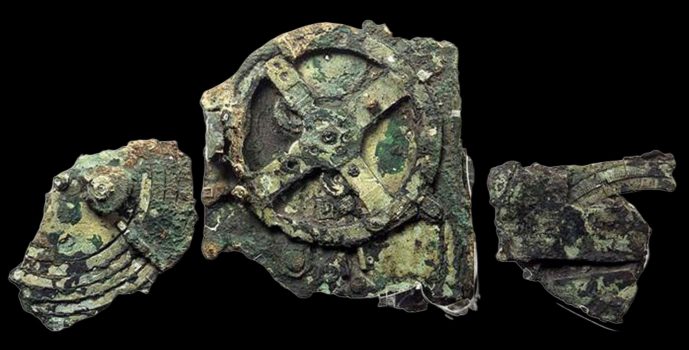 Pin
Pin Photo by Cardiff University/EPA/REX
The Antikythera Mechanism is straight-up mind-blowing. Found in a shipwreck off the coast of a tiny Greek island, this device is often called the world’s first analog computer. Built more than 2,000 years ago, it had gears, dials, and a complex design that could predict the positions of stars and planets. When scientists first saw it, they couldn’t even believe it was real. It took decades just to figure out what it actually did.
Looking at the Antikythera Mechanism today is like staring into a hidden chapter of human history. It’s proof that ancient people had genius-level engineering skills, long before we thought it was possible. They weren’t just building temples and writing poetry — they were also decoding the universe with machines. The fact that it sat underwater for centuries, slowly decaying, while modern civilization was being built above it, gives it a haunting feeling. It’s a quiet reminder that brilliance isn’t a modern invention — it’s been with us all along.
7. Ötzi the Iceman’s Tools – Around 5,300 Years Old
 Pin
Pin Photo from Pinterest
Ötzi the Iceman isn’t just a mummy frozen in ice — he’s a full story from a world 5,300 years ago. When explorers found him in the Alps back in 1991, they also found the tools he carried: a copper axe, a flint knife, a longbow, arrows, even a medicine kit. These weren’t random things. They were essential for survival, showing that even way back then, people lived with serious skills and instincts.
Holding one of Ötzi’s tools would be like shaking hands with someone from another world. His copper axe, especially, is fascinating — copper tools were a huge deal back then, rare and valuable. The axe blade was hammered with pure muscle and patience, without modern machines. His gear tells us a lot about his life: a hunter, a traveler, maybe even a warrior. Each scratch and crack on those tools speaks of hard journeys through frozen mountains. His belongings are not just artifacts. They’re a diary, written without words, by a man who fought hard to stay alive.
8. The Skhul and Qafzeh Burial Items – Around 100,000 Years Old
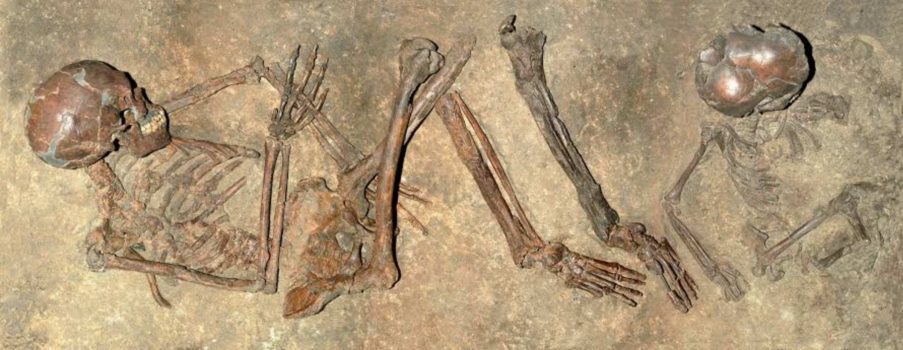 Pin
Pin Photo from OpenEdition Journals
Buried deep inside caves in Israel, archaeologists found skeletons of early humans — and with them, objects that told a deeper story. These items, dating back nearly 100,000 years, are some of the oldest known burial artifacts ever discovered. Shell beads, red ochre stains, and careful positioning of bodies suggest that even back then, people honored their dead in ways that meant something powerful.
It’s hard not to feel something raw and real when thinking about this. Someone, thousands of generations ago, stopped to bury their loved ones with care, using beads and colors. Life wasn’t just about eating, hunting, and surviving. It was about memory, loss, and maybe even hope. These burial artifacts prove that emotions — love, grief, respect — aren’t modern feelings. They’ve been baked into our bones for tens of thousands of years. Every shell bead, every smear of red ochre, is a quiet message across time: we lived, we cared, we remembered.
9. The Baghdad Lion Hunt Relief – Around 2,600 Years Old
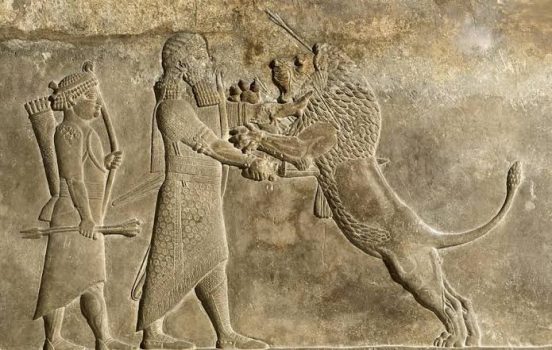 Pin
Pin Photo from British Museum
The Baghdad Lion Hunt Relief isn’t just art — it’s raw, brutal storytelling carved in stone. Made around 2,600 years ago in ancient Mesopotamia, this massive panel shows powerful kings battling lions. But it’s more than just a show of strength. Back then, lions were symbols of chaos, and hunting them was seen as protecting the people and keeping the world in balance. Every deep-cut muscle, every fierce roar captured in the stone feels like it’s still alive.
What makes the Lion Hunt Relief stand out is how real it feels. You can almost hear the shouts, the clash of weapons, the growl of the lions. Ancient artists weren’t just copying what they saw — they were breathing energy into their work. Standing in front of this artifact today, you don’t feel like you’re looking at something dead. You feel like you’re stepping straight into a royal arena where power, pride, and survival crashed together. It’s a piece of history that never really stopped roaring.
10. The Rosetta Stone – 2,200 Years Old
 Pin
Pin Photo by Hans Hillewaert from Wikimedia Commons
The Rosetta Stone is, quite literally, a key to history. Discovered in Egypt in 1799, this large stone slab holds the secret to understanding ancient Egyptian hieroglyphs. Carved around 2,200 years ago, it features a decree issued by King Ptolemy V, written in three scripts: Greek, Demotic, and hieroglyphic. It wasn’t just a stone; it was the puzzle piece that unlocked the entire language of one of the world’s most fascinating civilizations.
What makes the Rosetta Stone so incredible is the way it bridges cultures and eras. Without it, we might never have understood Egypt’s vast history. Looking at it today, it’s humbling. The stone represents human curiosity, the unyielding quest to understand what’s been left behind. And more than that, it’s a symbol of how the past and present are linked. Thousands of years ago, people carved on that stone, not knowing it would be the key to unlocking the mysteries of their world for future generations.
FAQs
The oldest known artifact is often debated, but stone tools found in Kenya — dating back about 3.3 million years — are considered among the oldest. For the list here, the oldest surviving artifacts made by Homo sapiens include the 40,000-year-old Löwenmensch figurine and the 400,000-year-old spear tips from Schöningen. These artifacts show not just survival, but imagination and advanced skills.
Scientists use several dating methods like carbon-14 dating for organic materials, thermoluminescence for ceramics, and stratigraphy to study soil layers. It’s not a perfect science, but cross-checking different methods helps build a more accurate timeline. Honestly, it’s a crazy amount of work and patience just to figure out that something is, say, 75,000 years old!
Artifacts connect us directly to people who lived thousands — sometimes millions — of years ago. They show that even when life was brutal, humans still cared about creativity, rituals, survival strategies, and emotions. Holding or even seeing an ancient artifact is like hearing the faint voice of someone who lived through an entirely different world.
Definitely. Tons. Every year, archaeologists uncover new things buried under deserts, oceans, and forests. And let’s be real — with how much of the earth remains unexplored, there are probably thousands of ancient artifacts still hidden, waiting for the right moment (or person) to bring them back into the light.
The Antikythera Mechanism easily wins when it comes to mystery. Even after decades of study, we still don’t fully understand how ancient Greeks managed to build something so advanced. It’s the kind of artifact that makes you question just how much ancient knowledge has been lost over time.

































